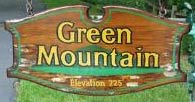The History of GMRA (and Its Name)
In the late 1960s most major cities across the nation, including the Washington DC metropolitan area, had one or two primary repeaters. Most Amateurs operated FM simplex, congregating on the two most popular frequencies of 146.520 and 146.940. Mobile and base stations primarily consisted of modified Motorola and General Electric commercial gear, and autopatch (the capability of making telephone calls from a mobile or handheld through a repeater) was sparse to non-existent. This was all about to change with the repeater revolution.
About that time, five local Amateurs got together and decided to put together our area�s first autopatch repeater. Cell phones were a twinkle in someone�s imagination, so having the capability of making a telephone call from your mobile was considered elite and exciting. Very few, if any, of the general population had that capability except for high government and corporate officials. And the commercial equipment was quite bulky, unlike the VHF/UHF transceivers of today.
To activate a repeater, the FCC required a lot of details and paper work, including, but not necessarily limited to: height of antenna, effective radiated power (ERP), output power etc. And special callsigns were assigned, unlike today, where anyone can activate a repeater using his/her own call. In October of 1971, after months of construction and reconstruction of a Motorola tube repeater and with the authorization of the FCC, the 146.610 repeater was activated from the residence of K3BEQ in Cheverly, Maryland with the assigned call of WR3ABB. The Washington DC area had its first full time autopatch repeater. In 1972, the 146.880 repeater became operational with the callsign of WR3ABC at its present location in Greenbelt, Maryland. It should be recognized that this was before the establishment of band plans and 146.880 was a sparsely used simplex frequency. Fortunately, the repeater was accepted, whereas those putting up a repeater on say, 146.940, a major simplex frequency, were confronted by controversy, jamming, and some very angry Amateurs. The furor was eventually quieted with the implementation of today�s band plans. Amateur repeaters exploded during the early to mid 1970s.
While the 146.880 repeater has always been at the Greenbelt site, the 146.610 repeater has had an interesting relocation cycle. It has been moved 5 times over the course of about 20 years. From the residence of K3BEQ, it was relocated to a tower. It was then relocated to an approximate 10 story apartment building. Because of interference and maintenance problems, it was moved to the top of a smaller building, and then once again moved back to its former tower. In April of 2009 it was moved to Bladensburg, as its former tower was scheduled to be de-commissioned / dismantled.
And that is the story about the early beginnings of GMRA and some information on the repeater growth in general, across the nation. Little did the five Founding Fathers realize that the repeaters would be operational many decades later and continue as the largest repeater Association in Prince George�s County and one of the largest in the State of Maryland.
Oh, I almost forgot. The Association�s name and how it came about. Because the 146.610 repeater was originally located at the site of one of the Founding Fathers, K3BEQ, Murray Green, who had always had a dream of living on a mountain top, the name: �The Green Mountain Repeater Society� was suggested. After some discussion, the word Society was changed to Association.
That�s the way it was, back in 1971... The rest is history.
.






